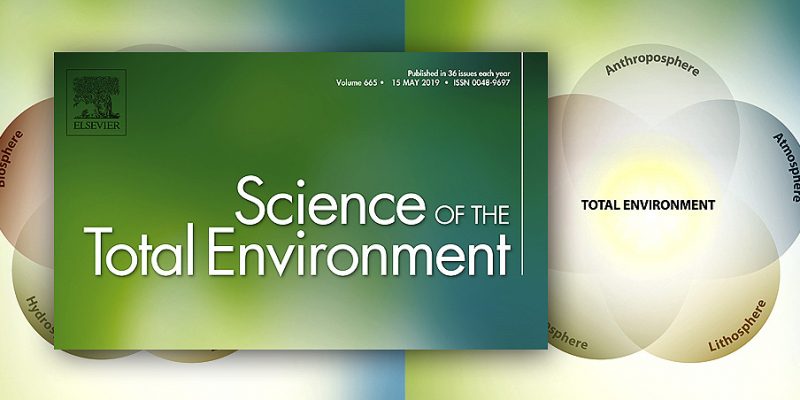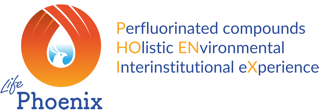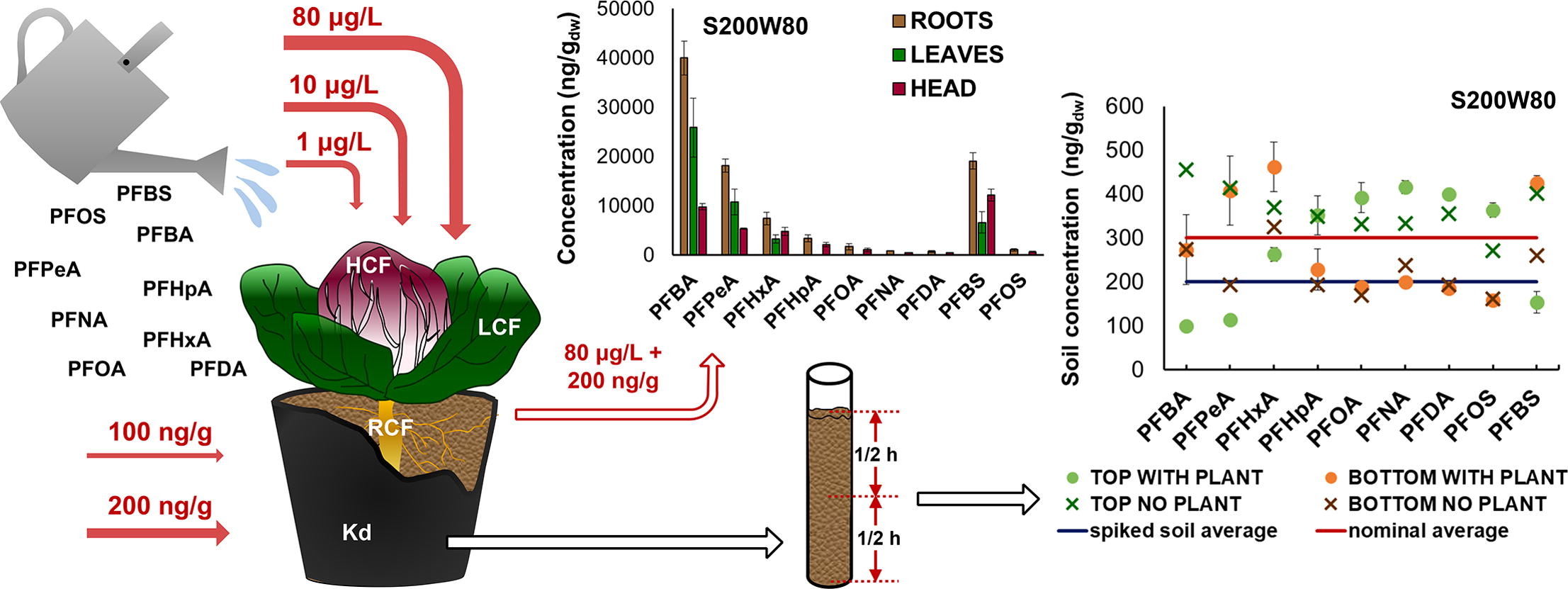PFAS and agriculture: first results of red chicory tests under controlled conditions published on Science of the Total Environment - Life Phoenix

A priority area of intervention for an effective mitigation of the risk of PFAS diffusion is the agriculture sector and, in particular, the use of irrigation water. For this reason, within the LIFE PHOENIX project, evaluation tests were conducted on typical Venetian agriculture products (specifically Chioggia red chicory), studying the absorption of perfluoroalkyl acids from expressly contaminated soil and irrigation water. The data and results obtained, already available to the scientific community since several months, have been condensed in complete form in an article published on the latest issue (March 2020) of the international journal Science of The Total Environment.
The experiment regarding the exposure to PFAS of red chicory plants was conducted under controlled conditions, in a greenhouse, at higher concentrations than the environmental ones. The originality of this work is the study of the combined effect of red chicory exposure to both water and contaminated soils, while in similar previous observations this process had been examined using mainly hydroponic crops or growing plants in pre-contaminated soils. In this way, the absorption/transfer mechanisms were identified also as a function of the chain length, and the related chemical-physical constants were obtained in order to be used in risk analysis models under current development.
The study largely confirmed the known data of the scientific world, specifically that the different congeners of perfluoroalkyl acids can be absorbed through the root system and move to the epigean part. It was possible to verify that the concentrations absorbed in all parts of the plant decrease exponentially at the increasing of chain length, with a preferential accumulation in the roots compared to the epigean part. At the same time, it has been shown that the soil, by reducing the direct impact of the water used for irrigation, plays a fundamental role in reducing the absorption availability of the long-chain PFAS.
Obviously, the results of laboratory experiments should not be directly and simplistically transferred to actual site-specific situations, due to the variability of environmental factors, irrigation methods, volumes and concentrations of irrigation water and the lithological characteristics of the agricultural soils. As a matter of fact, the verification of real concentrations in agricultural areas at different pollution levels and the study of the effects of short chain PFAS remain among the primary strategic objectives of the LIFE PHOENIX project, funded by the European Union and coordinated by the Veneto Region, which will end in March next year.
The data and results achieved by the project are continuously disseminated in various forms (e.g. scientific articles, conferences, newsletters, seminars, etc.) and through the official website (lifephoenix.eu). The abstract of the scientific article on red chicory, entitled "Uptake and translocation of perfluoroalkyl acids (PFAA) in red chicory (Cichorium intybus L.) under various treatments with pre-contaminated soil and irrigation water", and the related references, are available at the webpage of the Science of The Total Environment thematic review, current issue.
Questo sito fa uso di cookie (tecnici e analitici ad essi assimilabili) per migliorare l'esperienza di navigazione degli utenti e per raccogliere informazioni sull'utilizzo del sito stesso. Oltre ai precedenti il presente sito contiene componenti di terze parti (Facebook, Twitter, Google) che utilizzano cookie di profilazione a scopi pubblicitari per i quali e' necessario prestre il consenso. Proseguendo nella navigazione nel sito si accetta l'uso di tutti i cookie di terze parti precedentemente elencati.


